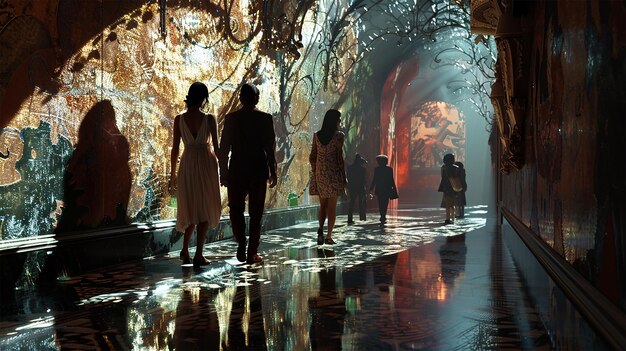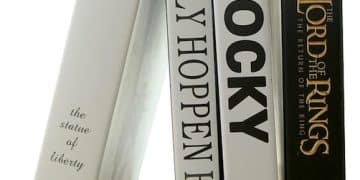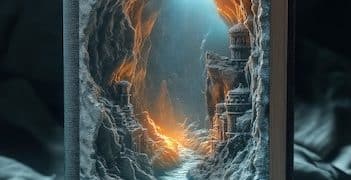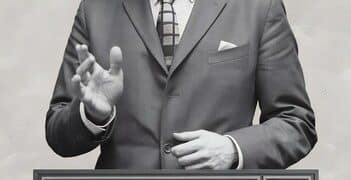Book to Screen: Best and Worst Movie Adaptations

Navigating the complex world of adaptations, this article pinpoints three outstanding book-to-screen successes and contrasts them with two adaptations that failed to capture the essence of their literary sources.
The journey from book to screen is fraught with challenges, where the magic of literature can either be amplified or completely lost in translation. Let’s explore some adaptations that shone and others that missed the mark.
The Allure of Adaptation: Why Books to Film?
Adapting a book into a film seems straightforward, but it’s a high-wire act. How do you condense hundreds of pages, capture the essence of characters, and satisfy both devoted readers and new viewers? The allure lies in pre-existing fan bases and rich narratives, but the execution is key.
The draw of adapting novels into films rests on several pillars. Novels often offer complex plots, well-developed characters, and immersive worlds that have already captured the imaginations of readers. This pre-existing fan base presents a built-in audience for the film adaptation.
The Challenges of Adaptation
Transforming a novel into a film isn’t simply about transcribing the story. It involves a series of creative decisions, from selecting which plotlines to emphasize, to determining how to visually represent characters and settings. Each choice can significantly impact the final product.
- Condensing the narrative without losing key details is crucial.
- Visual representation of characters must align with reader’s imagination without alienating the visual expectations of filmgoers.
- Maintaining the tone and thematic depth of the original work is essential for satisfying the book’s fans.
- Balancing faithfulness to the source material with the need for cinematic storytelling requires skill.
Ultimately, a successful adaptation walks a tightrope between honoring the source material and crafting a compelling cinematic experience. It’s a delicate balance that can either lead to critical acclaim or widespread disappointment.
Adaptation Success: ‘The Lord of the Rings: The Fellowship of the Ring’
Peter Jackson’s ‘The Lord of the Rings: The Fellowship of the Ring’ set a high bar for fantasy adaptations. But what made this movie succeed where others have failed?
Peter Jackson’s adaptation of “The Lord of the Rings: The Fellowship of the Ring” is widely celebrated as a triumph of cinematic storytelling. But behind the stunning visuals and epic scope, there are several underlying reasons why this adaptation succeeded where many others falter.
Faithful Adaptation
The film remains remarkably faithful to Tolkien’s original work, capturing the spirit and tone of the book with precision. The attention to detail in costumes, sets, and character portrayals helped to immerse the audience in Middle-earth.
Jackson’s Vision
Jackson had a deep appreciation for the source material, and it shows in every frame. He understood what made the books so beloved and worked to translate that magic onto the screen. The world and characters were carefully crafted.

The adaptation of ‘The Lord of the Rings: The Fellowship of the Ring’ serves as a blueprint for successful book-to-screen transitions, demonstrating how a combination of respect for the source material, visionary direction, and meticulous attention to detail can create a cinematic masterpiece that honors the original work while captivating a global audience.
Adaptation Success: ‘Harry Potter and the Prisoner of Azkaban’
While the early ‘Harry Potter’ films were faithful, ‘Harry Potter and the Prisoner of Azkaban’ took a bolder approach. This film is a masterclass in adapting a book while still making it cinematic.
Directed by Alfonso Cuarón, ‘Harry Potter and the Prisoner of Azkaban’ took a darker and more visually sophisticated approach to the series, earning praise for its artistic direction and emotional depth.
Visual Storytelling
Cuarón brought a distinctive visual style to the series, using creative cinematography and atmospheric settings to enhance the story. The film’s visuals effectively captured the darker tone of the later books.
Character Depth
The film delved deeper into the emotional lives of the characters, exploring themes of fear, loyalty, and betrayal. The performances were nuanced, adding layers of complexity to beloved characters.
- Cuarón made bold changes to the aesthetics of Hogwarts, adding his own creative vision.
- The film masterfully weaved humor into the darker narrative, providing a balanced and engaging viewing experience.
- The film’s innovative visual effects and dynamic camerawork elevated the cinematic quality of the series.
- The performances of the cast, particularly the young actors, were praised for their growing maturity and emotional depth.
The adaptation of ‘Harry Potter and the Prisoner of Azkaban’ stands as a testament to the creative possibilities of adapting a beloved book series. By embracing a bolder visual style, delving deeper into character development, and trusting the audience to embrace a more complex narrative, Cuarón and his team crafted a film that not only honored the source material but also elevated the entire Harry Potter cinematic universe.
Adaptation Success: ‘The Martian’
Andy Weir’s novel, ‘The Martian,’ was a triumph of hard science fiction, and Ridley Scott’s film adaptation followed suit. A mix of science, humor, and stunning visuals made this movie a hit with audiences and critics alike.
Ridley Scott’s adaptation of Andy Weir’s ‘The Martian’ is a celebration of human ingenuity and resilience, set against the backdrop of the desolate Martian landscape.
Scientific Accuracy
The film went to great lengths to portray the science accurately, consulting with experts to ensure the scenarios and solutions were plausible. This commitment to realism added authenticity to the story.
Watney’s Humor
Matt Damon’s portrayal of Mark Watney was pitch-perfect, capturing the character’s humor and determination in the face of adversity. Watney’s wit made the character engaging, the audience rooting for him.
This adaptation emphasizes strong storytelling, scientific integrity, humor, and visual spectacle, making it a standout in the realm of book adaptations. This movie captured the magic of survival with excellent acting and directing, securing its place as a success.
Adaptation Failure: ‘The Golden Compass’
Philip Pullman’s ‘The Golden Compass’ had all the ingredients for a successful adaptation: a compelling story, rich characters, and a fantastical world. Why did the film fall short?
‘The Golden Compass’ had the potential to launch a successful franchise, but it ultimately disappointed both fans of the book and general audiences. This film missed the mark in many ways.
Diluted Themes
The film shied away from the book’s more controversial themes, such as its critique of organized religion. This dilution of the source material left the story feeling shallow and incomplete.
Pacing Problems
The film struggled with pacing, rushing through key plot points and failing to develop the characters adequately. As a result, the emotional impact of the story was diminished.
- The failure to explore the complex relationship between humans and their daemons diminished the emotional impact of the story.
- The rushed pacing left key plot points underdeveloped, making the narrative feel disjointed and confusing to audiences unfamiliar with the source material.
- The film’s visual effects, while impressive, often overshadowed the narrative and character development, creating an imbalance that detracted from the overall viewing experience.
- The dilution of the book’s more controversial themes, particularly those related to religion and authority, resulted in a watered-down version of the story that lacked depth and resonance.
The adaptation of ‘The Golden Compass’ serves as a cautionary tale. By diluting key themes, struggling with pacing, and failing to fully develop the characters, the film lost the essence of what made the book so compelling, ultimately disappointing fans and failing to ignite a successful franchise.
Adaptation Failure: ‘Eragon’
Christopher Paolini’s ‘Eragon’ was a young adult fantasy sensation, but the film adaptation was a critical and commercial disappointment. What went wrong?
Despite high expectations, the film adaptation of ‘Eragon’ failed to capture the magic and depth of the source material, disappointing both fans and critics alike.

Poor Special Effects
The film’s special effects were underwhelming, particularly Saphira the dragon, who looked unconvincing. This lack of visual polish detracted from the film’s sense of fantasy.
Inaccurate Story
The film took significant liberties with the source material, changing key plot points and character arcs. These deviations alienated fans of the book.
In conclusion, the adaptation of ‘Eragon’ fell short due to a combination of underwhelming special effects, inaccurate storytelling, and underdeveloped characters. These shortcomings resulted in a film that failed to capture the imagination of audiences and ultimately disappointed fans of the beloved book series.
| Key Point | Brief Description |
|---|---|
| 🎬 Successful Adaptations | Faithful to source, visionary direction, attention to detail. |
| 💔 Failed Adaptations | Diluted themes, pacing issues, poor special effects. |
| ✨ ‘The Martian’ | Science, humor, and survival combine for a hit. |
| 🧙 ‘Harry Potter: POA’ | Darker tone, visual style, character depth. |
FAQ
▼
A successful adaptation usually respects the source material, captures the essence of the story, and delivers a compelling cinematic experience. Good casting and directing are crucial.
▼
Failures often stem from deviating too far from the source material, poor casting choices, or failing to capture the tone and themes of the book. Budget constraints can also hinder success.
▼
It’s rare, but some movies have been praised for improving upon the book by streamlining the narrative or adding new layers of depth. This remains a hotly debated topic among fans.
▼
Yes, even a faithful adaptation can suffer from poor direction, acting, or pacing. Adhering to the source material doesn’t guarantee a good cinematic experience.
▼
Special effects are essential for bringing fantastical elements to life, but they shouldn’t overshadow the story or characters. They should enhance, not distract from, the narrative.
Conclusion
Adapting books to film is a complex and delicate art, needing respect for the written word and an understanding of cinema. While some adaptations like ‘The Lord of the Rings’ and ‘The Martian’ achieve brilliance, others like ‘The Golden Compass’ and ‘Eragon’ serve as cautionary tales. The key lies in striking the crucial balance.





